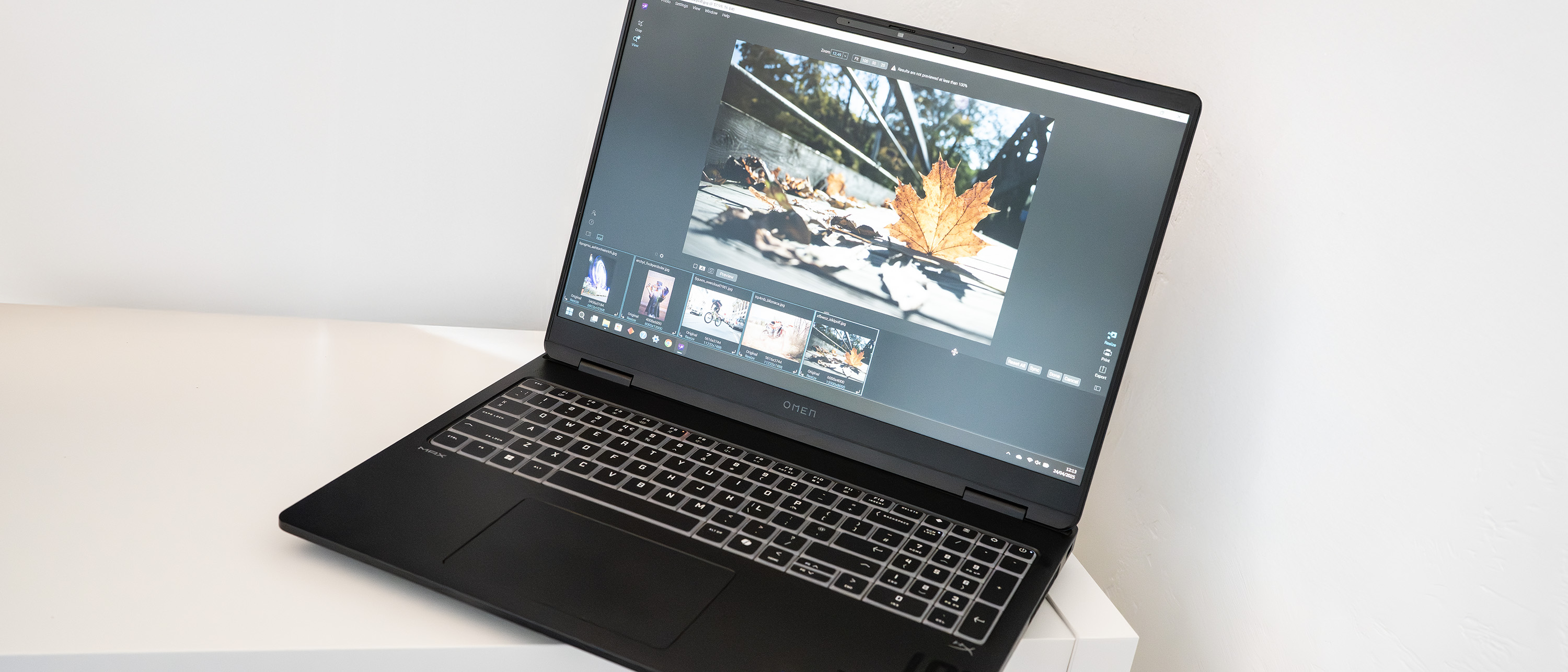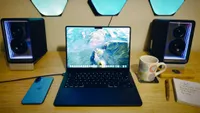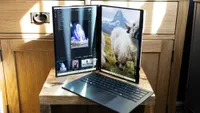Our Verdict
If your workflows involve pushing large numbers of pixels about, as video or in 3D, then a PC with a GPU like this will certainly help speed things up. The HP Omen Max 16 is a true desktop replacement, and is studded with fast ports to move data in and out. It has the expected low battery life of a gaming laptop, but its 32GB of RAM may also be a bit small for heavy modern workloads.
For
- Huge processing power
- Really bright screen
- Lots of fast ports
Against
- Low battery life
- Perhaps not enough RAM
- Trackpad infuriating
Why you can trust Creative Bloq
HP’s gaming laptops come in two forms: slim and chonky. The HP Omen 16 Max is one of the latter, weighing almost twice the mass of a MacBook Air. It’s packing an Nvidia GeForce RTX 5080 laptop GPU, one of the more powerful portable options available at the moment, which gives it the pixel-processing capability of a desktop PC in a portable shell, making it a real option for a potential laptop for 3D modelling or a video editing laptop.
While it lacks a 4K OLED screen, the display welded to the top of the Omen Max is an extremely bright IPS with a decent, if not spectacular, colour response. You don’t get much battery life from a machine like this, but for those who need to deal with high-res video on the move or want to play games at high framerates, it’s a compelling option.
Key specifications
CPU: | Intel Core Ultra 9 275HX |
NPU: | Intel AI Boost |
Graphics: | Nvidia GeForce RTX 5080 (16 GB GDDR7) |
Memory: | 32GB DDR5-5600 - up to 64GB available |
Storage: | 1TB SSD - up to 2TB available |
Screen size: | 16in |
Screen type: | IPS |
Resolution: | 2560 x 1600 |
Refresh rate: | 240Hz |
Colour gamut (measured): | 81% P3 |
Brightness (measured): | 596 nits |
Ports: | 2x Thunderbolt 4, 2x USB Type-A 10Gbps, 1x HDMI 2.1, 1x 2.5Gb Ethernet, 1x AC charging, 1x 3.5mm audio combo |
Wireless connectivity: | Wi-Fi 7, Bluetooth 5.4 |
Dimensions: | 35.65 x 26.9 x 2.48 cm |
Weight: | 2.68 kg |
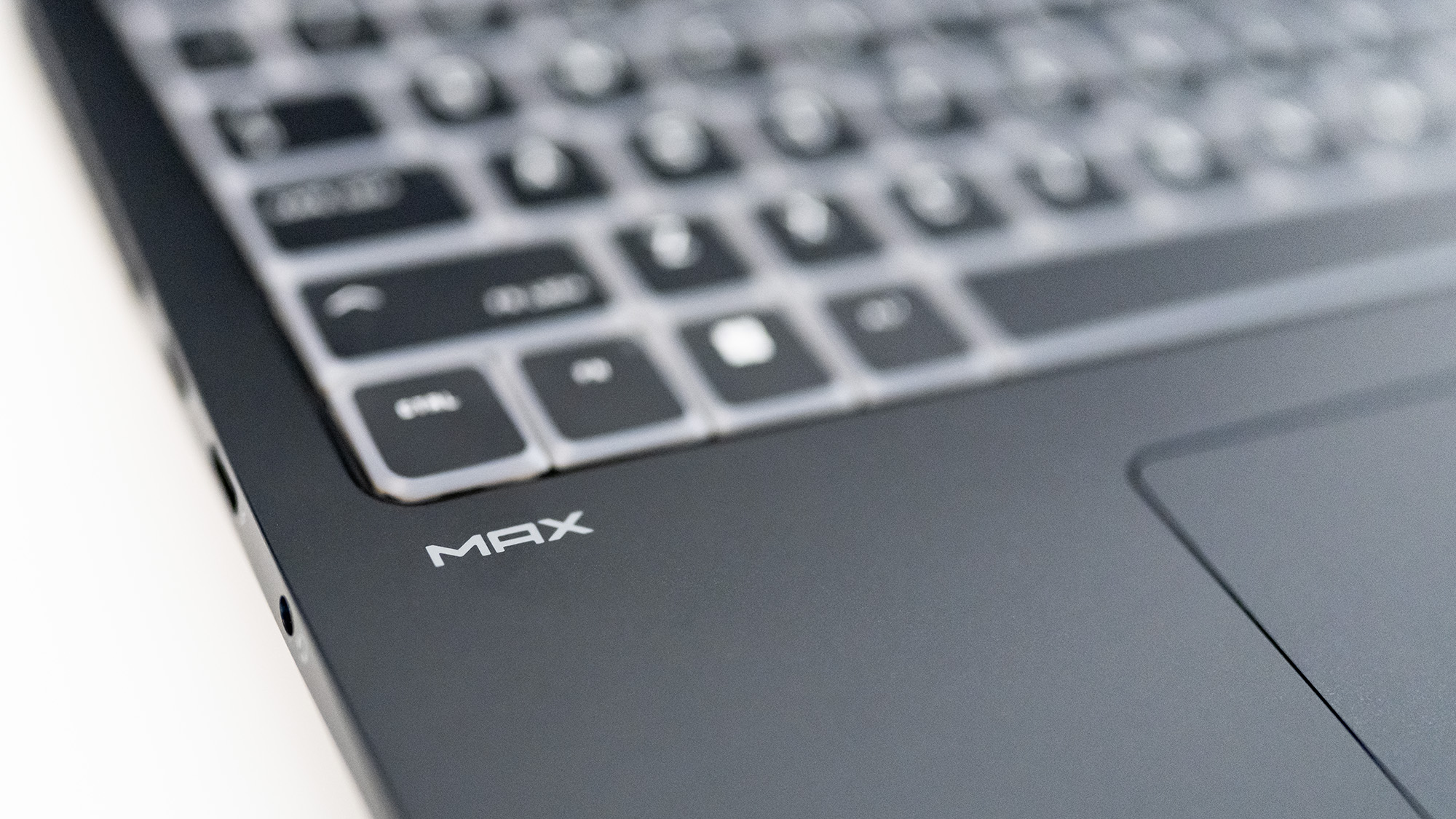
Design, build and display
• Not exactly thin and light
• But then it's not meant to be
As a thick black plastic rectangle, the HP Omen 16 Max doesn’t take any chances with its design. The backlit keyboard is capable of rainbow colours, and there are large cooling vents at the rear and underneath, but it doesn’t stray far from the familiar aesthetic.
So we get a shallow wedge-shaped design that’s a bit thicker at the hinge end, a few logos scattered about the place (we like the fact the laptop appears to be named ‘Max’, the title written just at the bottom-left of the keyboard - it’s a friendly moniker that will do a lot to break down the barriers between PC and owner. HP has decided that ‘designed and built for winning’ is its new slogan, but it doesn’t say what you’re winning at. Life in general, if you’re considering buying a £3000 laptop, we presume.
So while Max may be a touch dull in terms of design - though it does brag of its 240Hz refresh rate right on the front - the laptop is functionally built, it feels solid, probably due to the weight, and the 16-inch screen size means it’s a considerable lump to carry about with you. There's always a tradeoff between portability and processing power, and Max has come down distinctly on one side of that equation.
Design score: 3/5
Daily design news, reviews, how-tos and more, as picked by the editors.
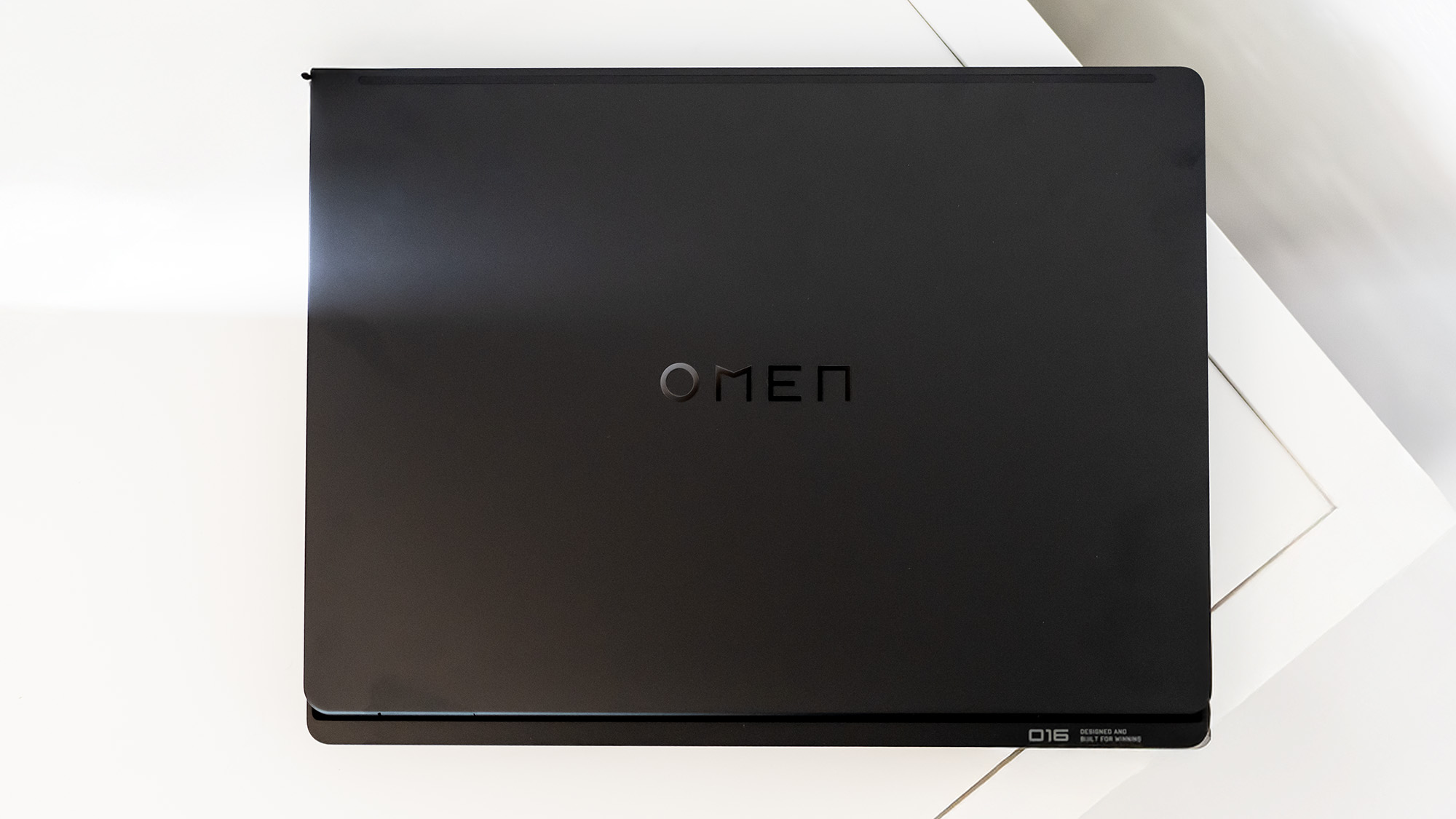
Features
• Lots of fast ports
• Trackpad seems to have a flaw
Max’s keyboard is from HyperX, and fills the front of the laptop below the screen, the speakers having been shunted off to the sides. It sports a numpad, and keys that are full-size but close together. An attempt has been made to soften this by making them trapezoidal, with tops slightly smaller than their bases, and it almost works. There's a strange effect when you look at it, the 3D nature of the keys fading away and looking like a flat, touch-sensitive keyboard from long ago. But there's plenty of travel in the keys, and they light up. What’s most offensive about it, however, is the font used for the letterforms - the B looks like an 8 and the R like an A.
The touchpad is a strange beast. It clicks when you press it, as all touchpads do, but doesn’t respond to this. You have to tap, and this makes clicking and dragging nearly impossible. It could be a software problem, and we spent a while trawling through settings (but as it did it in the Windows 11 installer too, we’re not so sure). If this is deliberate, it’s in opposition to 20 years of trackpad usage from many people - even Apple allows you to change the behaviour of its trackpads in its Settings app.
There's better news elsewhere, with USB 4 ports providing fast storage options and the ability to transfer files from a camera without waiting a week. Two USB-A 10 Gbps ports and a proper 2.5 Gbps Ethernet connection (albeit a low-profile socket that has to be levered open before you can use it) provide more options, as does the HDMI 2.1 for hooking up an external monitor.
Feature score: 3/5
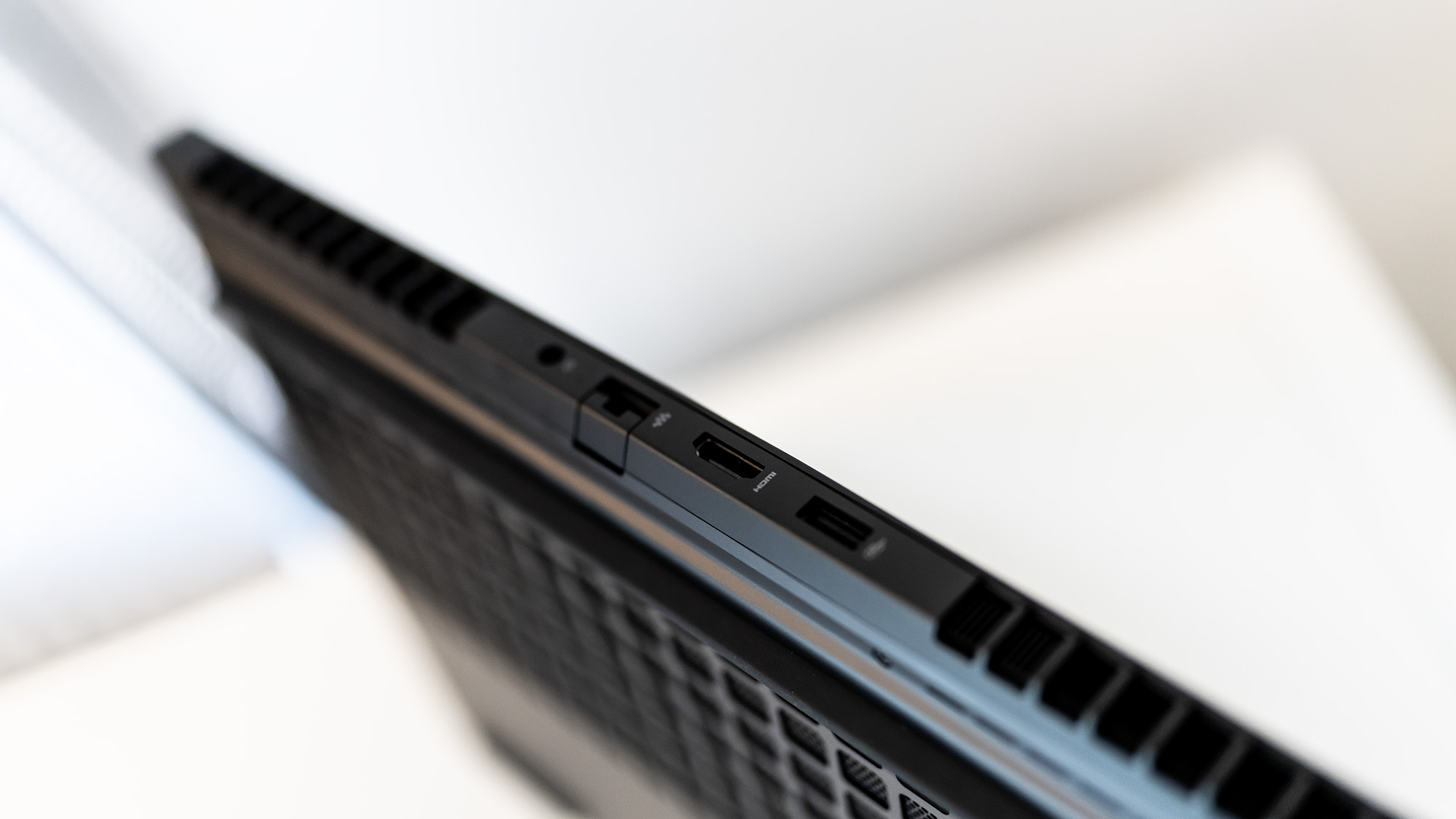
Benchmark scores
We test every one of our laptops using the same benchmarking software suite to give you a thorough overview of its suitability for creatives of all disciplines and levels. This includes:
• Geekbench: Tests the CPU for single-core and multi-core power, and the GPU for the system's potential for gaming, image processing, or video editing.
• Cinebench: Tests the CPU and GPU's ability to run Cinema 4D and Redshift.
• UL Procyon: Uses UL Solutions' Procyon software suite to test the system's ability for AI image generation in Stable Diffusion, its Microsoft Office performance and its battery life.
• Topaz Video AI: We use Topaz Video AI to test the system's ability to upscale video and convert video to slow-motion.
• PugetBench for Creators: We use the PugetBench for Creators benchmarking suite to test the system's ability to run several key tasks in Photoshop and DaVinci Resolve Studio, as well as its performance when encoding/transcoding video.
• ON1 Resize AI: Tests the system's ability to resize 5 photos to 200% in a batch process.
| Header Cell - Column 0 | Header Cell - Column 1 | HP Omen Max 16 with 32GB RAM |
|---|---|---|
GEEKBENCH 6 | CPU Single-core: | 3062 |
| Row 1 - Cell 0 | CPU Multi-core: | 18,456 |
| Row 2 - Cell 0 | GPU OpenCL: | 187,683 |
CINEBENCH 2024 | CPU single-core: | 137 |
| Row 4 - Cell 0 | CPU multi-core: | 1457 |
| Row 5 - Cell 0 | GPU: | N/A |
UL PROCYON | AI Image Generation (Stable Diffusion 1.5) | 2309 |
| Row 7 - Cell 0 | Office Productivity Benchmark: | 274,000 |
| Row 8 - Cell 0 | Battery Life Benchmark: | 3h 49m |
TOPAZ VIDEO AI | Enhancement: | 69.49 |
| Row 10 - Cell 0 | Slowmo: | 237.07 |
| Row 11 - Cell 0 | Combined: | 1,283.48 |
ON1 RESIZE | 200% resize time: | 11,102ms |
Overall: | 8376 | |
| Row 14 - Cell 0 | General: | 85.7 |
| Row 15 - Cell 0 | Filter: | 81.9 |
3D Mark | Time Spy Extreme | 8610 |
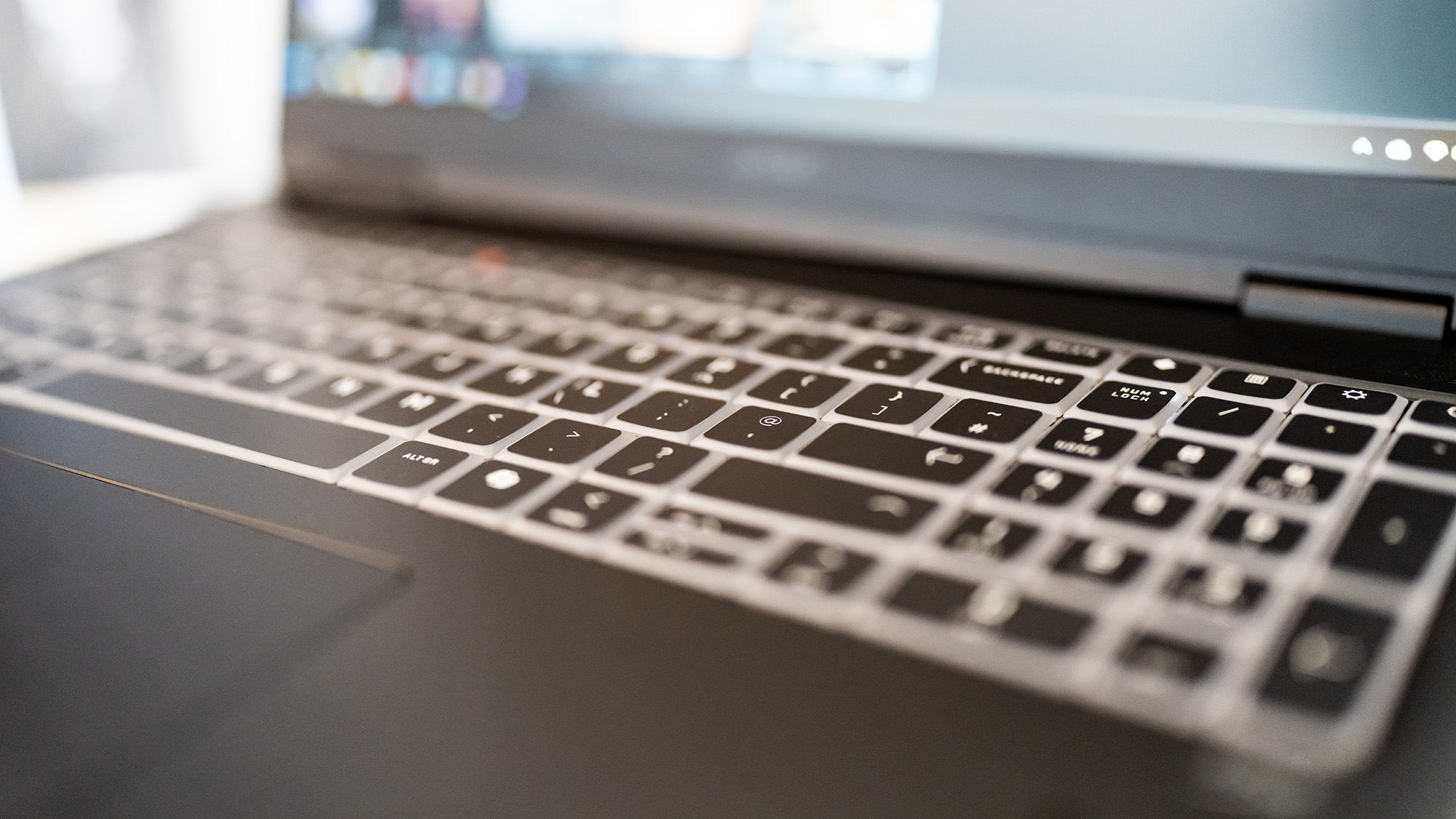
Performance
• Hard to beat in a portable
• Battery life very short
The combination of Intel and Nvidia silicon in Max is truly monstrous, representing some of the best each company is capable of at the beginning of 2025. The Core Ultra 9 275HX comes with 24 cores, 8P/16E, and as Intel chips no longer support hyper-threading that’s 24 threads, some faster than others. It’s backed up by 32GB of RAM, which is starting to get tight for creative purposes, with some machines quickly heading toward 128GB, but it is at least reasonably fast. A terabyte of storage, too, might be considered a low amount, but there are plenty of fast SSDs you can hook up to those USB 4 ports if you need more. HP offers up to 64GB of RAM and 2TB of storage for the Omen Max, but that will obviously cost extra.
In our tests, Max posts a Cinebench 2024 score that’s ahead of the M4 MacBook Air in the multicore workout (as it has more cores) but is behind it when only a single core is used. The Ultra 9 isn’t a slow chip, so this shows how well Apple Silicon is performing right now. It also beats the Ryzen AI Max chip in the ASUS ROG Flow Z13 in both metrics.
Sadly, Cinebench doesn’t currently support the RTX 5080, and we’ve had trouble getting DaVinci Resolve to run on it too, but in our other tests Max looks like a fine creative workhorse. It does AI-powered image resizing in one-third of the time it took the Asus ROG Flow Z13, while its benchmark score in Topaz Video AI was almost three times that of the MacBook Air M4 and the ROG Flow.
It does get a little hot while doing all this, however, and with fans on the bottom you’ll feel it if you’re actually using the laptop on your lap. Battery life is also a concern, as it always is in gaming laptops. Max managed less than four hours of looping video, and this will drop significantly when gaming or rendering, as it had switched to the Core Ultra’s integrated graphics to save power in a task that didn’t require the Nvidia GPU. Luckily, there's a dedicated charging port and a large power brick to juice it back up again.
The screen delivered an excellent peak brightness of almost 600 nits, and with a colour response of 81% P3, 100% sRGB, and 80% AdobeRGB it’s beaten by the MacBook Air and some OLEDs, but isn’t bad for an IPS.
Performance score: 4/5
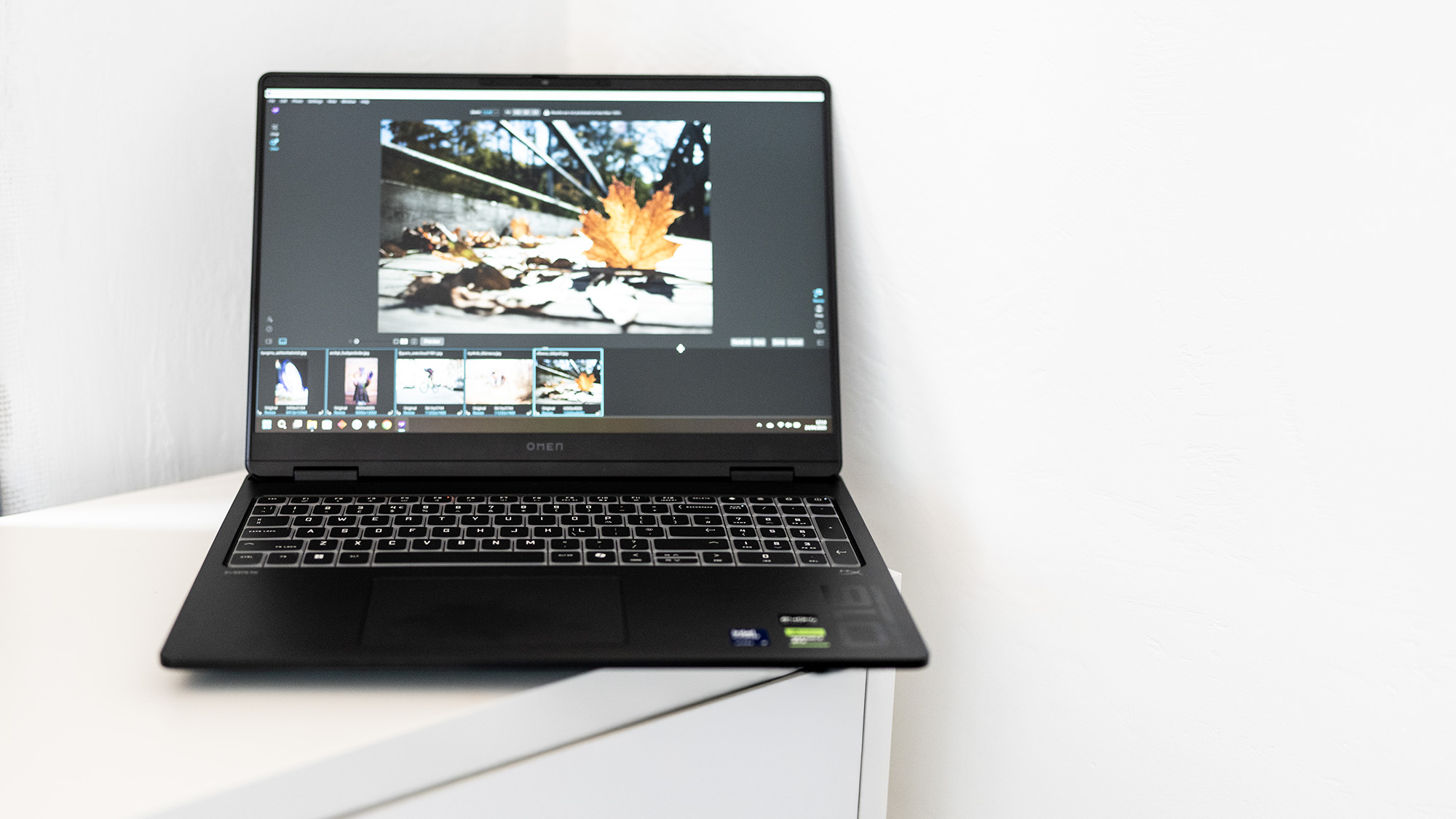
Price
The HP Omen Max costs £2,999.99 at the time of writing. That’s a lot for a laptop, so you’ll need to be sure it’s the right one for you. For the same amount as this Max spec you could spec up a 16-inch M4 Pro MacBook Pro with 48GB of RAM, and while the graphics performance wouldn’t be as great, you’d get a significant gain in battery life. However, if performance is of paramount importance, there is a 64GB variant of the Omen Max available, but that would set you back more money. There are plenty of other gaming laptops that come into the same pricing ballpark, so it’s worth shopping around to see if you can get similar specs for less.
Value score: 2/5
Who is it for?
• Moving picture wizards
This is a machine built for pushing pixels, and it does well at all rendering tasks as well as using AI for graphics workflows. Feed it video and it will eat it up. It also plays games, we hear.
Attributes | Notes | Rating |
|---|---|---|
Design: | Looks like a gaming laptop, which is what it is. | 3/5 |
Features: | Good port selection, but a trackpad that's less than ideal. | 3/5 |
Performance: | Lots of hot chips means plenty of power, but it's hungry too. | 4/5 |
Value: | You get a lot for your money, but there are plenty of other options. | 2/5 |
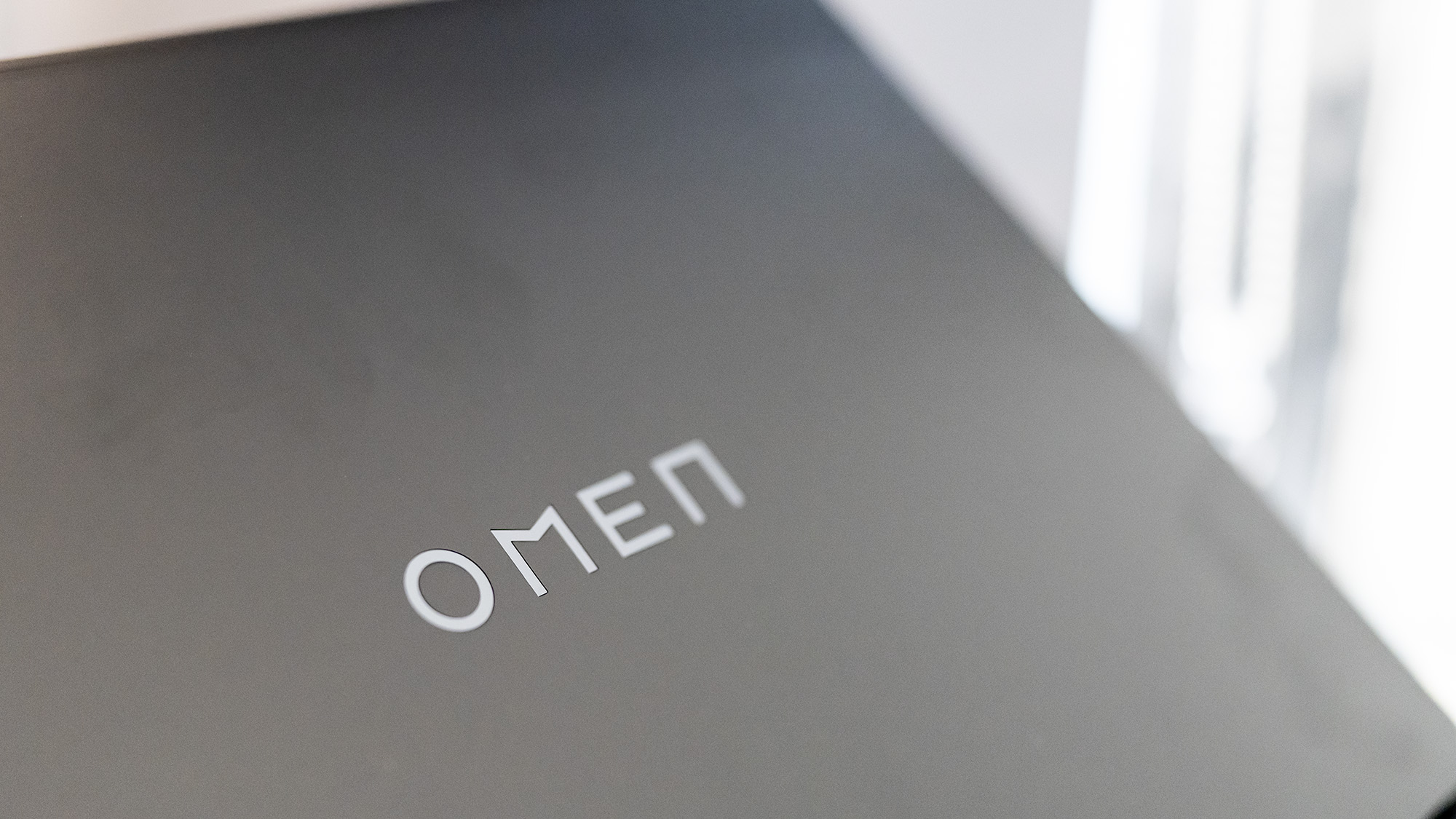
Buy it if...
- You need a desktop replacement
- You don’t mind the weight
- 32GB of RAM is enough (64GB is available)
Don't buy it if...
- Your needs stretch to more RAM without the extra budget
- Or internal storage
- Or more battery life
Also consider
There are few surprises on board the well-built, reliable, fast MacBook Pro with the M4 chip. It's an excellent creative all-rounder.
The big and powerful Gigabyte Aorus Master 16 offers graphic oomph and lots of processing power for power-hungry creatives, but at a price.
ASUS' gorgeous two-screened laptop returns for a 2025 refresh, and is as good as ever. That comes with a caveat though - there's still no discrete graphics chip in this baby - but if you can live with that then it’s a top-notch portable computing experience.
out of 10
If your workflows involve pushing large numbers of pixels about, as video or in 3D, then a PC with a GPU like this will certainly help speed things up. The HP Omen Max 16 is a true desktop replacement, and is studded with fast ports to move data in and out. It has the expected low battery life of a gaming laptop, but its 32GB of RAM may also be a bit small for heavy modern workloads.

Ian Evenden has been a journalist for over 20 years, starting in the days of QuarkXpress 4 and Photoshop 5. He now mainly works in Creative Cloud and Google Docs, but can always find a use for a powerful laptop or two. When not sweating over page layout or photo editing, you can find him peering at the stars or growing vegetables.
You must confirm your public display name before commenting
Please logout and then login again, you will then be prompted to enter your display name.
